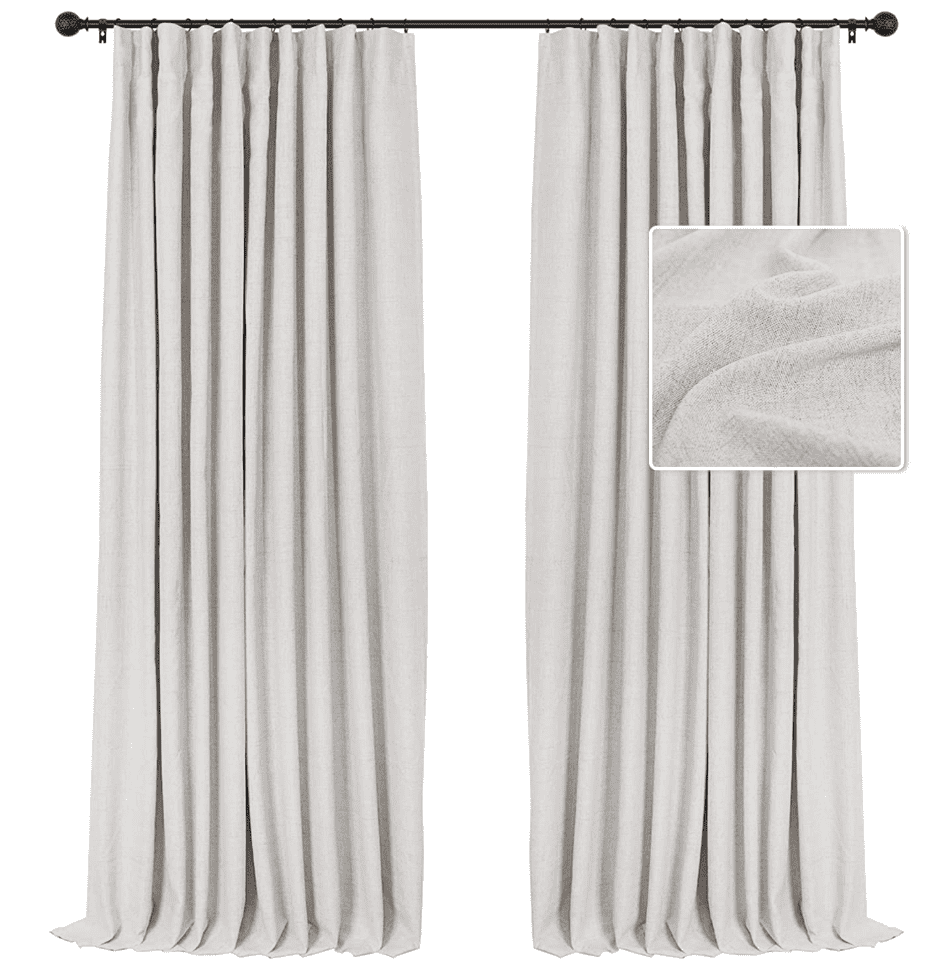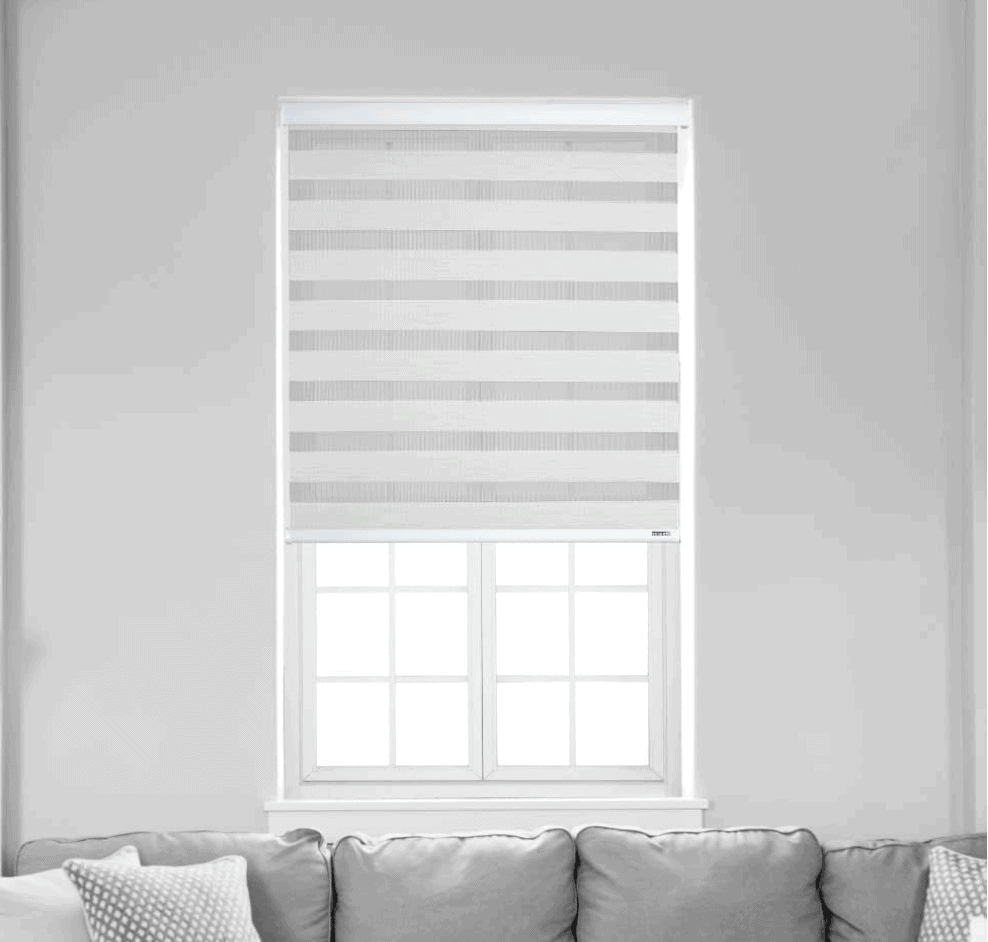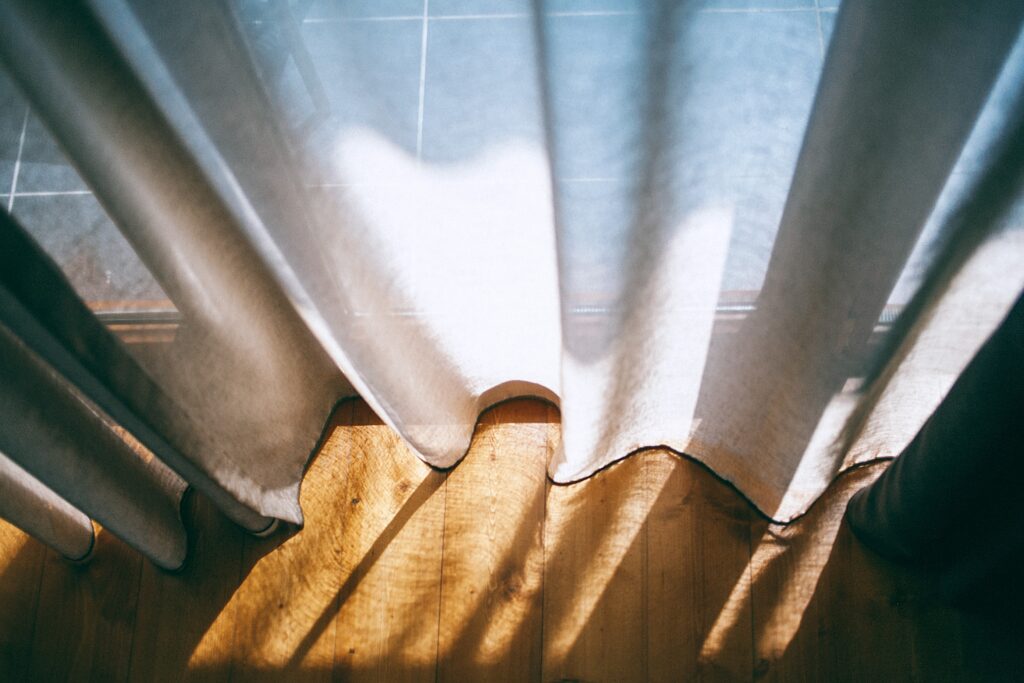3 Easy Ways To Make Your Baby’s Nursery Dark

Alright, fellow sleep-deprived parents, gather around and pull up a chair!
If you’ve ever tried to tiptoe around your house, hoping your little one stays asleep, you’re in the right place.
My search for that sweet, uninterrupted baby slumber led me to a revelation – a dark nursery is a dreamy nursery.
And while my coffee dependency deepened in those first few months, I did pick up a trick or two to make the nursery resemble a nighttime oasis, even during those glaring noon hours.
Here are some of my tips and tricks for making your baby’s nursery dark to optimize baby sleep.
I use affiliate links in some blog posts. If you click through and make a purchase, I earn a small commission at no extra cost to yourself. Thank you for your support.
Reasons for Keeping the Nursery Dark
First, let’s talk about why making your nursery dark is crucial.
Promoting longer and better sleep becomes easier when there’s minimal light interference. Our bodies, irrespective of age, associate darkness with rest.
For babies, who are still establishing their sleep patterns, a dark room can be a gentle reminder of bedtime.
Furthermore, it aids in the regulation of the baby’s circadian rhythm, setting them on the path to distinguishing day from night early on.
This differentiation can make those midnight feedings less disruptive over time.
Lastly, a controlled lighting environment minimizes distractions and potential disturbances, keeping the focus purely on rest.
3 Easy Ways to Make Your Baby’s Nursery Dark
When I became a parent, I discovered several truths. Babies have an inexplicable knack for creating messes, the word “nap” suddenly becomes one of the lifelines in my day, and the importance of turning a baby room into a pitch-black sanctuary for better sleep (because a baby taking short naps stinks — been there, done that).
Blackout Curtains or Blinds

If you’ve ever tried to get your baby to sleep better during a bright afternoon nap, you’ll understand the magic of blackout curtains or blinds.
Blackout curtains and blinds have been a game-changer for me.
Specifically tailored to block external light, they make the nursery dark, mimicking nighttime even during the sunniest parts of the day.
This means that the space around your baby’s crib remains conducive for sleep, regardless of what the world outside is doing.
- Material Matters: For those who want to dive into the world of blackout, consider your curtain materials. Velvet or polyester are top choices as they inherently block out a significant amount of light, making the nursery dark enough for those crucial naps.
- Installation Tips: Once you’ve selected your perfect curtain, don’t overlook the importance of installation. Make sure that the curtain rod extends beyond the window frame, reducing the chance of any rogue rays interrupting your baby’s slumber from the sides.
- Additional Benefits: But wait, there’s more! Apart from guaranteeing a dark room, these curtains pull a double shift. They also insulate the room, maintaining a pleasant temperature. This not only ensures a comfy environment near the crib but might just give your energy bills a little breather.
I know many sleep consultants recommend a room so dark you can’t see your hand in front of your face but that was never feasible for us or necessary. We found pairing a blackout blinds with some blackout curtains was good enough. Pitch black? No. But, good enough.
Layered Window Treatments

Designing a nursery can be akin to piecing together a beautiful puzzle. While there’s an emphasis on aesthetics, there’s also a need to ensure our little ones have the ideal sleep space. One brilliant nursery idea that marries both form and function is the use of layered window treatments.
By embracing this method, you can strike a perfect balance, allowing just the right amount of light in the room while ensuring you can quickly darken the space when it’s time for your baby’s nap in the dark. Let’s dive into the benefits:
- Versatility: Dual layers are, in essence, like having a dimmer switch for natural light. Morning playtime can revel in the glow of sunlight, but when it’s nap time, you can effortlessly ensure a snug environment, without any bright room interruptions.
- Texture Play: For those with a flair for design, this approach is a godsend. Picture this: luxurious, velvety drapes cascading gracefully, paired with the ethereal touch of light, airy sheers. Not only do they regulate light, but they also elevate the nursery’s aesthetics to a whole new level.
- Easy Maintenance: Parents, rejoice! As the seasons change or as little accidents happen (because let’s face it, they will), the layered approach makes your life simpler. During the summer months, when dust and pollen are at their peak, or when the usual wear and tear starts to show, having removable layers means you can wash or switch them out with minimal fuss.
In the grand scheme of things, how you manipulate the light in your baby’s room can make a world of difference.
Not only to help your baby drift into dreamland but also in creating a space that’s both stylish and functional.
As you sift through nursery ideas, give layered window treatments a shot; it might just be the magic touch you’ve been looking for.
DIY: Do It Yourself

When it comes to ensuring our little ones sleep better at night, we parents often become inventors. If the idea of store-bought room darkening curtains has you glancing warily at your wallet, don’t worry. There’s a DIY solution to make the nursery dark enough for sleep, tailored for the creative souls and those looking to save a penny or two.
Here’s how you can craft your own room-darkening solution:
- Black Paint or Paper: While it may sound a tad drastic, painting a wooden board or a piece of thick cardboard with matte black paint can be an effective barrier against light. This can be placed externally or internally against the window during sleep times, ensuring minimal light seepage. The bonus? It’s easy to remove when it’s playtime. You could also just go ahead and tape up some black construction paper.
- Thrifted Materials: Often, thrift stores have dense fabrics up for grabs at a fraction of the cost. Hunt for dark-colored, heavy materials. The darker and denser, the better they are at playing the role of room darkening curtains. Attach these to your existing curtain rods, and voilà, a cost-effective solution!
- Sealing the Edges: One common oversight in our quest for darkness is the sneaky light that seeps in from the sides or the top of the windows. A quick tip for creating a dark room is to use adhesive velcro strips. Attach one side to your DIY curtain and the other to the wall or window frame, allowing you to seal off those light leaks effectively.
Drawing from personal experience, diving into DIY solutions gave me the satisfaction of not only being resourceful but knowing I helped make the nursery dark enough for better sleep.
Whether you’re an avid DIY enthusiast or a parent looking for budget-friendly options, these tips can pave the way to dreamland.
How Dark Should My Baby’s Room Be for Sleep?
For sleep, a baby’s room should be dark enough to mimic nighttime conditions.
A little bit of the sleep science behind it is that our bodies, especially those of our little ones, produce melatonin, a hormone responsible for sleep. This production is triggered in low-light conditions.
So, naturally, the challenge is to limit the light coming into the room, signaling to our baby that it’s time to sleep which helps trigger the production of melatonin.
If you’re traveling, the SlumberPod can be a great way to maintain a dark sleep environment.
A room that resembles dusk or early evening can provide the ideal conditions.
This doesn’t mean pitch black, but dim enough to limit distractions and signal to the baby that it’s time to wind down.
Is My Baby Afraid of the Dark?

Fear of the dark is common among children, but for babies, it’s a bit different.
Infants, especially in their first few months, do not typically have a developed fear of the dark. In fact, the womb was a dark environment, and babies are often comforted by dim, cozy settings.
However, as babies grow and their imaginations develop, usually around the toddler years, they can start showing signs of being afraid of the dark.
Wrapping Up
Navigating the maze of parenthood, I’ve come to realize the undeniable truth that making a nursery dark enough for sleep can be the linchpin in a successful sleep routine, especially with a toddler who’s more curious about the world than ever.
The journey to make my baby’s room dark was peppered with trials, errors, and a fair share of sleepless nights, but each step was worth the sight of a peacefully sleeping child.
Whether you’re embarking on this journey with a newborn or trying to keep pace with a tireless toddler, remember: the ambiance plays a pivotal role.
Here’s to many nights of uninterrupted sleep and days filled with the energy to chase after those ever-curious little feet.





